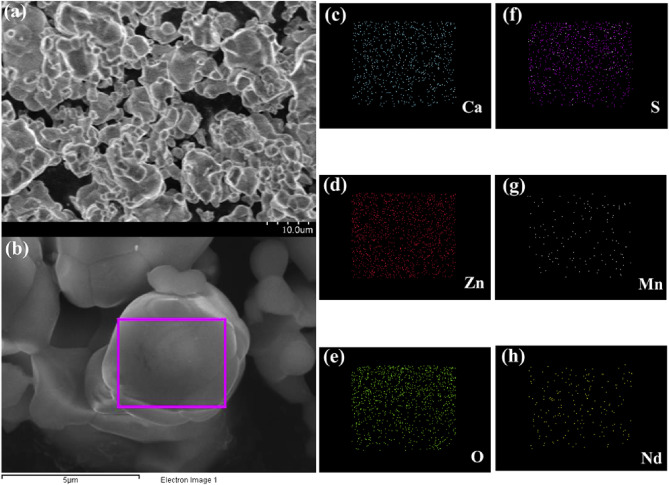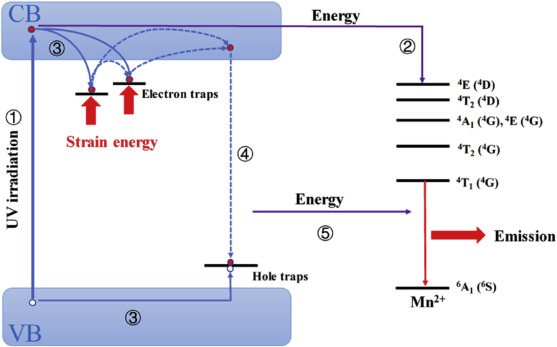As a category of mechanoluminescent materials, the elastico-mechanoluminescent (EML) material has great potential applications in stress sensors, stress distribution visualization, and self-diagnostic systems since it has numerous advantages, such as non-destruction, recoverability, real-time, in addition to the mechano-optical conversion. CaZnOS: Mn2+ can emit strong red light under a variety of mechanical stimuli (ultrasonic vibration, impact, friction and compression) and its EML intensity increases linearly with the applied compression load and has recoverability. More importantly, the matrix of this EML material has excellent chemical and thermal stability. Therefore, enhancing the EML intensity of CaZnOS: Mn2+ is of great value in realizing the practical application of EML materials for damage detection of engineering building structures in outdoor and sunlight environments.
Considering that the EML performance is closely related to the trap properties, the Group of Environmental Safety Monitoring (Professor ZHANG Hongwu’s Lab) in the Institute of Urban Environment (IUE), Chinese Academy of Sciences (CAS) has adopted the rare earth ions (Nd3+) co-doping method to optimize the EML performance of CaZnOS: Mn2+. The results revealed that EML intensity in CaZnOS: Mn2+ with 1 mol% Mn2+ content was greatly enhanced by Nd3+ co-doping. The optimal EML intensity of CaZnOS: Mn2+, 1.2%Nd3+ was about ten times than that of CaZnOS: Mn2+. In addition, the relationship between the EML intensity and the applied load was almost linear and the phosphor exhibited recoverable behavior under ultraviolet (254 nm) excitation. The measurements of photoluminescence, afterglow and thermoluminescence showed that more trap defects were generated in the host after co-doping Nd3+, which not only increased the trap concentration, but also introduced new traps, thus effectively improving the EML intensity of CaZnOS: Mn2+. Further the exploration indicated that the shallow trap contributed a lot to afterglow, while EML was mainly related to two deeper traps. This study could also provide theoretical basis for the further development of more efficient EML materials.
The work entitled Largely enhanced elastico-mechanoluminescence of CaZnOS: Mn2+ by co-doping with Nd3+ ions has been published in theJournal of Luminescence 2020,217,116777. This work was supported by the Key Program of International Cooperation of Fujian Province (2019I0032).

SEM images of the CaZnOS: Mn2+, 1.2%Nd3+ (a), (b) and related EDS elemental mapping images of Ca (c), Zn (d), O (e), S (f), Mn (g) and Nd (h).

The schematic diagram of elastico-mechanoluminescence (EML) mechanism in CaZnOS: Mn2+, Nd3+. CB: conduction band, VB: valence band.